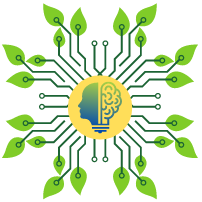ChatGPT is a groundbreaking tool, offering swift solutions for writing, research, and an array of tasks. It’s cost-effective compared to hiring employees, but each interaction carries an environmental cost. For instance, generating a 50-word response produces around 5 grams of CO2 (Strubell et al., 2019). Though small in isolation, when multiplied by millions of daily interactions, the environmental toll becomes clear.
Let’s compare that to traditional office work. A 12-mile round-trip commute emits approximately 3.2 kg of CO2 per day (EPA, 2020). Beyond the commute, offices consume resources such as energy for lighting, heating, air conditioning, and water. Additionally, office infrastructure and supplies contribute to the carbon footprint.
ChatGPT, however, runs on data centers powered by electricity and cooled using large amounts of water. Despite tech giants like Google and Microsoft shifting toward renewable energy, these centers generate substantial heat, adding another layer to global carbon emissions. Yet, the efficiency of AI is undeniable: tasks that would take a human hours can now be completed in minutes.
In a world where we “can’t go back,” we should simply move forward mindfully, aiming for sustainable and efficient solutions.
The question is not whether AI is inherently good or bad; it’s about how responsibly we use it. While AI offers unparalleled convenience in reducing physical infrastructure like office spaces, it also demands energy-intensive data processing. Striking a balance between using these technologies and being mindful of their environmental impact is key. Rather than viewing AI as an environmental villain, it should be a tool we use intelligently to match the sustainability goals of our planet.
The Ethics of Using AI
AI’s rise sparks ethical discussions beyond environmental concerns. Are we on the brink of AI taking over? People like Elon Musk have voiced concerns about AI’s power, suggesting that unchecked AI could lead to unintended consequences, even resembling the dystopian visions of movies like The Terminator. But how far are we really from that reality? While AI today is capable of learning and improving, we’re still far from a fully autonomous AI that mirrors those sci-fi scenarios. The ethics of relying on AI for everything—from business decisions to personal assistants—demands thoughtful reflection. How much control are we willing to relinquish?
For those interested in exploring these questions further, we’ve analyzed the future implications of AI’s ethical challenges in our research paper. To dive deeper, check out our publication in the Journal of Green-Tech Intelligence Network.
References:
Strubell, E., Ganesh, A., & McCallum, A. (2019). Energy and policy considerations for deep learning in NLP. arXiv preprint.
EPA (2020). Greenhouse gas emissions from a typical passenger vehicle. U.S. Environmental Protection Agency. Retrieved from EPA.gov.



